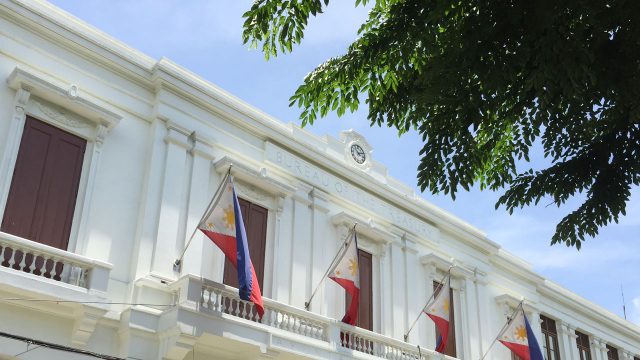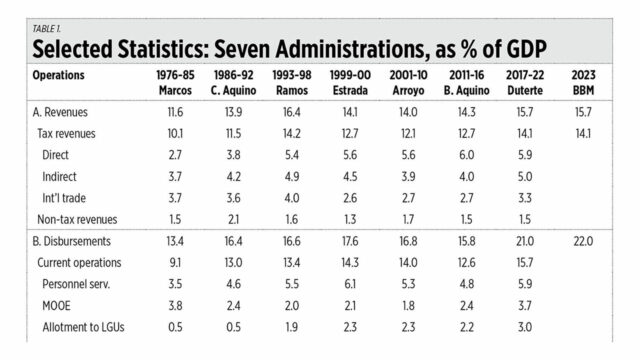Destabilization plots and ICC arrest orders
Speaking before the Army’s 4th Infantry Division at Camp Edilberto Evangelista in Cagayan de Oro City last Thursday, President Ferdinand “Bongbong” R. Marcos, Jr. vowed to quash destabilization plots. “We will not allow agents within the country to destabilize our government and create division within our nation,” said he.
The President was reacting to a claim of former senator Antonio Trillanes IV, also a former Philippine Navy officer, that high-ranking police officials were recruiting police and military officials, primarily from the Davao region, to join a plot to overthrow the Marcos administration. While the President has not received any report of a destabilization plot involving active police officials, noting the police are not engaged in politicking, he however did not rule out the possibility that retired officials could be hatching a destabilization plot.
But during the Philippine Military Academy’s graduation ceremonies in Baguio last Saturday, the President acknowledged fully the existence of destabilization moves. Addressing the Bagong Sinag Class of 2024, he said, “This is a time of birth pains — sadly, of opportunism, blatant attempts at destabilization, and last-ditch efforts to cling to the rapidly disappearing past.”
Which are the blatant attempts at destabilization? Which is the rapidly disappearing past?
It will be recalled that just a month ago, Davao del Norte Rep. Pantaleon Alvarez urged the police and military to withdraw their support from President Marcos, Jr. out of dissatisfaction with the President’s policies. “In a peaceful way, please withdraw your support from the chief executive. When you withdraw your support from him, he has no choice but to step down from his post,” Rep. Alvarez said in a mix of Pilipino and English during a rally of the Duterte die-hards in Tagum City. Former president Duterte was present at the event.
As chairman of the committee on Public Order and Dangerous Drugs, Senator Ronald “Bato” dela Rosa has conducted three hearings on the so-called Philippine Drug Enforcement Agency (PDEA) leaks. The supposed PDEA leaks stemmed from a pre-operation report in 2012 that stated that “a group of showbiz and politically affluent personalities are frequently using illegal drugs” inside a condominium in Makati City. The supposed PDEA report indicated that then-senator Bongbong Marcos and actress Maricel Soriano could be involved in illegal drugs.
Senators decried the testimony made by former PDEA agent Jonathan Morales because he couldn’t prove the authenticity of the documents he provided. Senate President Migz Zubiri said that “no pictures, no corroborating testimonies” were provided to them to support his claim that Bongbong Marcos was involved. Senator Jinggoy Estrada, who was very critical of Morales, the sole witness, said, “Allowing the dissemination of false information and fabricated narratives not only undermines the credibility of our institutions but also jeopardizes the pursuit of genuine justice and accountability.”
Morales was dismissed from the PDEA in 2013 due to dishonesty and grave misconduct. He is facing several legal proceedings due to estafa, false testimony, and complaints for implicating innocent individuals.
Still, Mr. Dela Rosa is persistent in conducting another hearing, convinced that the leaked documents were not fabricated. “I don’t have any hidden agenda here,” said he. He insists that the public hearing and investigation on the allegedly leaked documents is in aid of legislation to strengthen further government capability and protection in handling classified documents and information. He believes the leaked PDEA report pinning down Mr. Marcos as using illegal drugs is authentic. The hearings have led to the suspicion that Mr. Dela Rosa is holding them to bring down Marcos amid his falling out with former President Rodrigo Duterte.
Are destabilization moves against the Marcos administration meant to thwart the imminent International Criminal Court’s arrest orders against former president Duterte and the former commanders of his brutal War on Drugs?
Citing confidential information provided him, Mr. Trillanes expects that a warrant for the arrest of former president Duterte and others linked to the International Criminal Court (ICC) investigation will be hand-ed in by the international tribunal by June. He noted that Duterte’s daughter, Vice-President Sara Duterte-Carpio, could be included in the subsequent batches of arrest warrants.
The former senator was able to establish a relationship with the ICC by facilitating interviews with witnesses for the ICC’s probe. But he noted that some of the details he has revealed came from people privy to what the ICC is doing.
In various interviews with broadcast talk show hosts, ICC Assistant to Counsel Kristina Conti said former president Duterte and former police chiefs Ronald dela Rosa and Oscar Albayalde are “named as possible to be investigated” in the ongoing probe of the ICC. She said that she is “pretty sure Duterte will be considered as one of the most responsible and will probably be summoned or ordered arrested by the ICC.”
The ICC said Dela Rosa issued the 2016 command memorandum circular that launched “Project Double Barrel” and the national war on drugs. Albayalde continued the drug war when he assumed the post of Philippine National Police (PNP) chief in 2018.
She also said the directors of the Anti-Illegal Drugs Group and later the Drug Enforcement Group, and the PNP’s regional, provincial, and city-level directors in charge of coordinating operations on the ground may be called.
As for Sara Duterte, Ms. Conti noted that her name does not appear on the official public records of the ICC. “But it is a clear indication already that she might be included when the ICC specified that the scope of the investigation will be from November 2011 to June 2022.” Ms. Duterte served as mayor of Davao City from 2010 to 2013 and again prior to her election to higher office in 2022.
Mr. Marcos has repeatedly stated that his government will not serve any arrest warrant from the ICC against former president Duterte, maintaining that the ICC has no jurisdiction over the Philippines. But maybe Mr. Duterte believes Mr. Marcos has a hidden agenda.
When the President attended the United Nations General Assembly last year, he asked for the inclusion of the Philippines in the UN Security Council. He was asked in return to address human rights issues in the Philippines. Most probably he was told to give cooperation with the ICC, a UN body, top priority.
Oscar P. Lagman, Jr. is a keen observer of Philippine politics.























